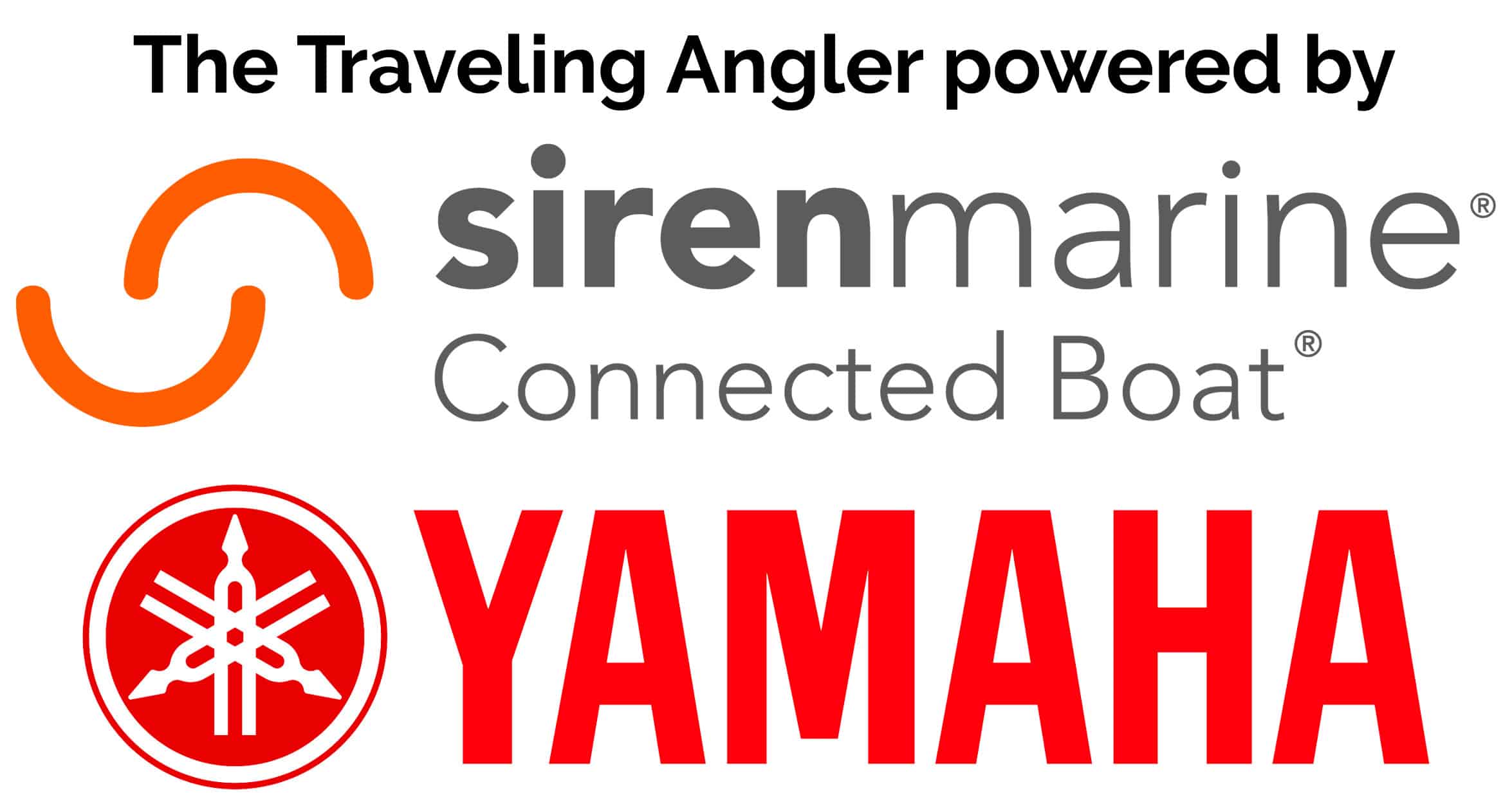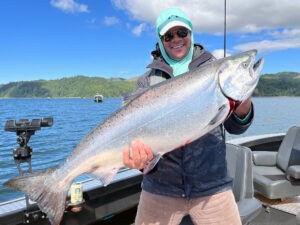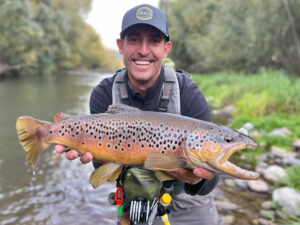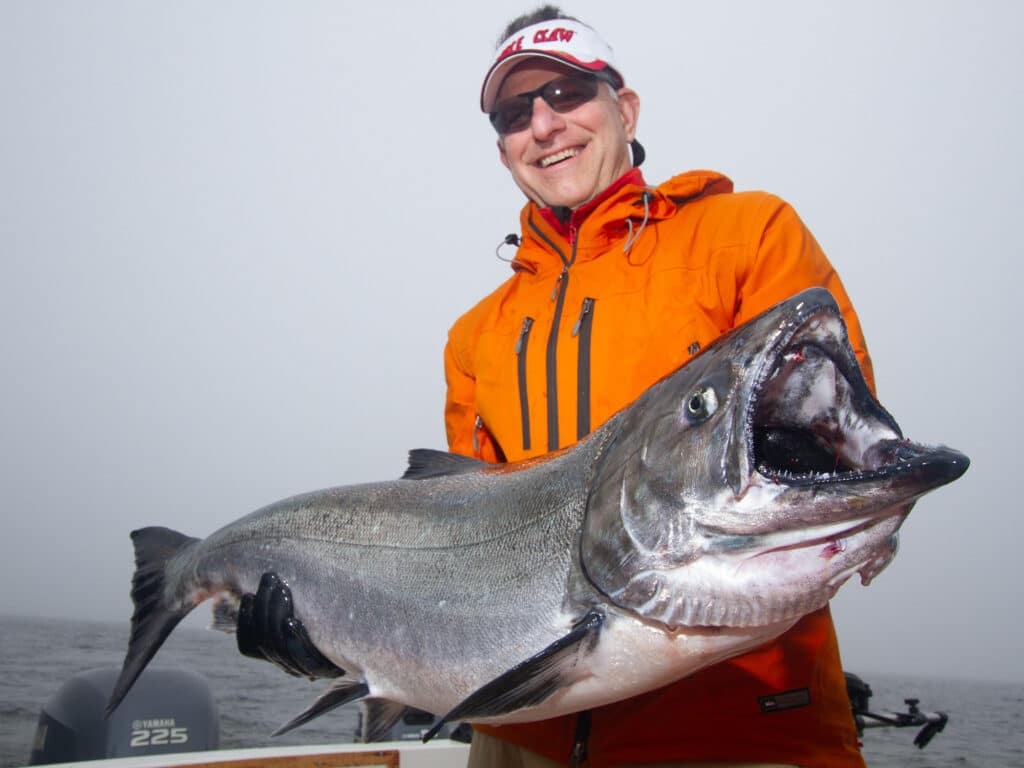
Although merely 100 miles as the crow flies from Seattle to the sounds of southwestern Vancouver Island, British Columbia, it can take the better part of a day to drive there, including the two-hour ferry crossing. But for fishing enthusiasts, it should prove to be a well-spent day.
Clayoquot and Barkley—the two sprawling sounds to which BC Route 4 extends down the island just over 100 miles from the ferry landing at Nanaimo—are filled with islands and inlets, and reefs and channels. For any experienced fisherman, that description spells fishy habitat.
Whether one drives in for guided fishing or tows a boat, he’ll find mostly the same species here as are caught in Alaskan waters. It could be said that these sounds, just north of the Lower 48, offer a taste of Alaska without the long trip.
For many, salmon are king. Of five species of salmon, chinook are king, also because they’re called king salmon. While the legal minimum size here is about 18 inches (45 centimeters), anglers look for 10- to 30-pound fish and occasionally much larger. The other major salmon target for anglers are coho (aka silvers), a schooling salmon typically weighing 5 to 15 pounds. In August, pinks (3 to 5 pounds) may abound.
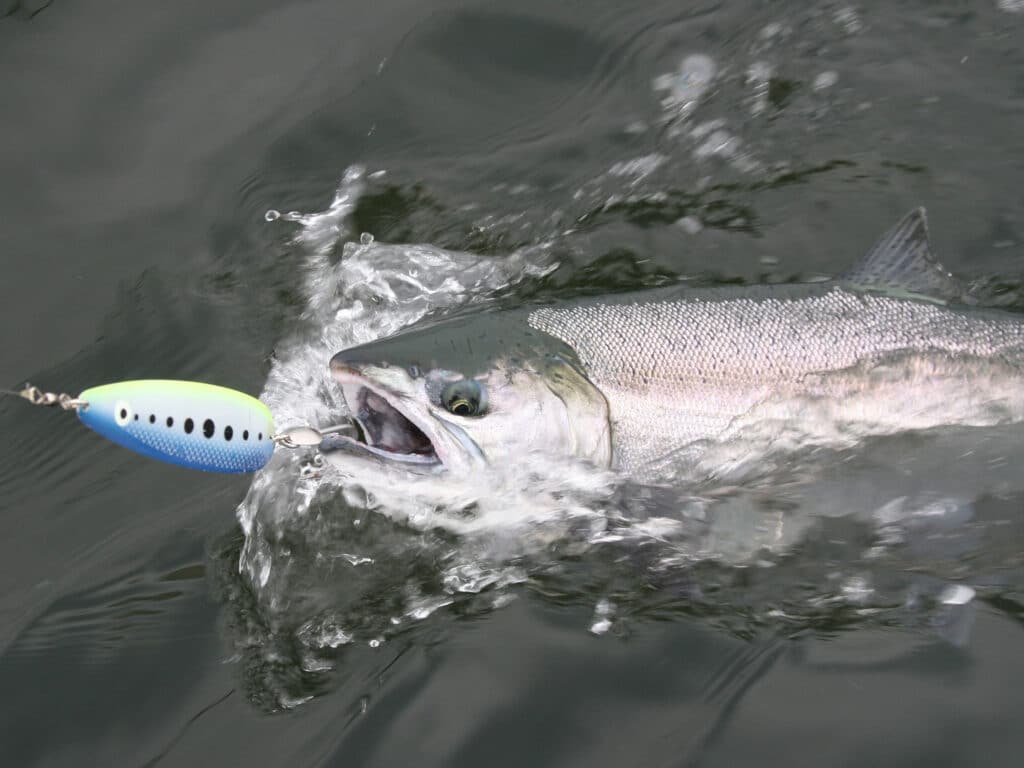
Salmon range widely along the coast, but are consistently found nearshore—sometimes right off the kelp. Trolling with downriggers, pulling large flashers ahead of herring, anchovies, plastic squid, spoons or plugs, accounts for the great majority of salmon caught.
In addition to salmon, bottomfish abound. Among those species, halibut is in a class by itself, in part by virtue of its size. Although they can be encountered nearshore, the best chances for success for the great flatfish occur over deeper offshore banks with smooth-bottom areas. Anglers targeting halibut will drop herring or salmon heads with heavy weights or large leadhead jigs with big plastic tails. Halibut also eagerly strike heavy-metal slow-pitch jigs. Braided line of 30-pound-test or heavier is warranted, since the next strike could be a fish well into three digits on the scale.
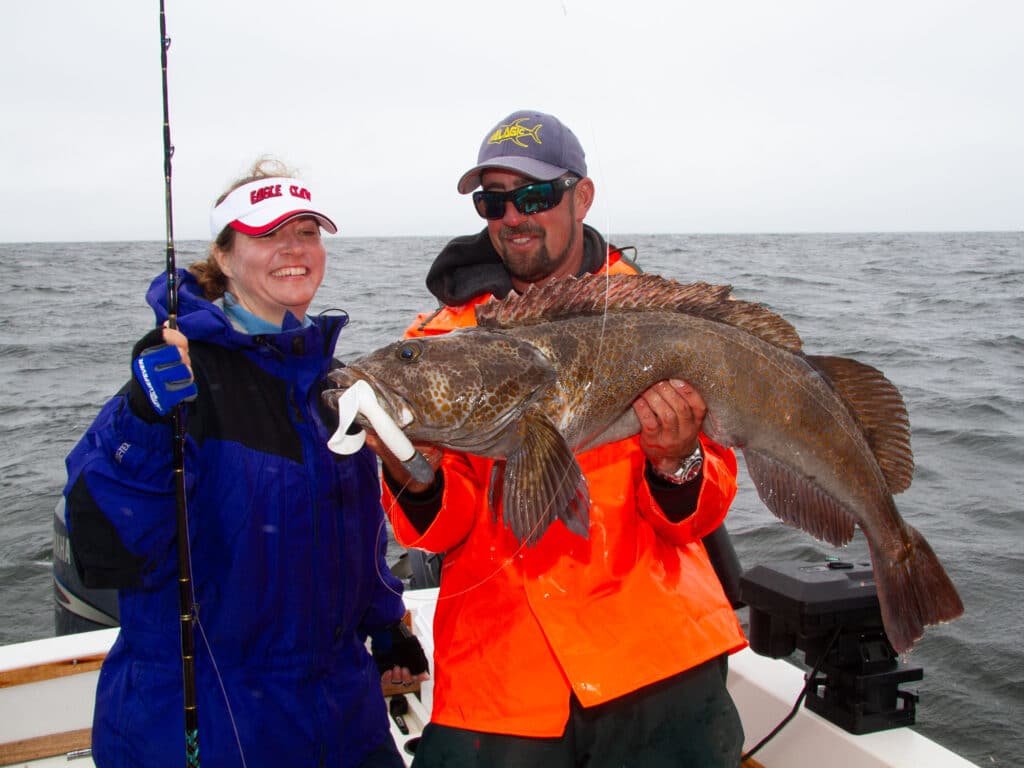
Perhaps no species can better be counted on to help a slow day than the lingcod. This elongate, toothy predator is unique to the Pacific Coast, from Baja, California, to Alaska. Expect to catch lings of 5 to 20 pounds, but monsters at least twice that lurk around rocky, current-swept reefs. Very commonly, these bottom dwellers will follow up a hooked fish of any type, grabbing it in their jaws and refusing to let go, often until they’re on a gaff or in the net.
The ambush predators will pounce anything that moves in their domain—any sort of metal jig or plastic bait—and they’ll often swim up toward the surface to snatch baits trolled for salmon. Lingcod are superb to eat. Sometimes boating the limit of three (legal size: 25.6 inches) can be easily accomplished. After that, catch-and-release is still an option since lings have no swim bladders and the hardy fish can quickly return to the depths.
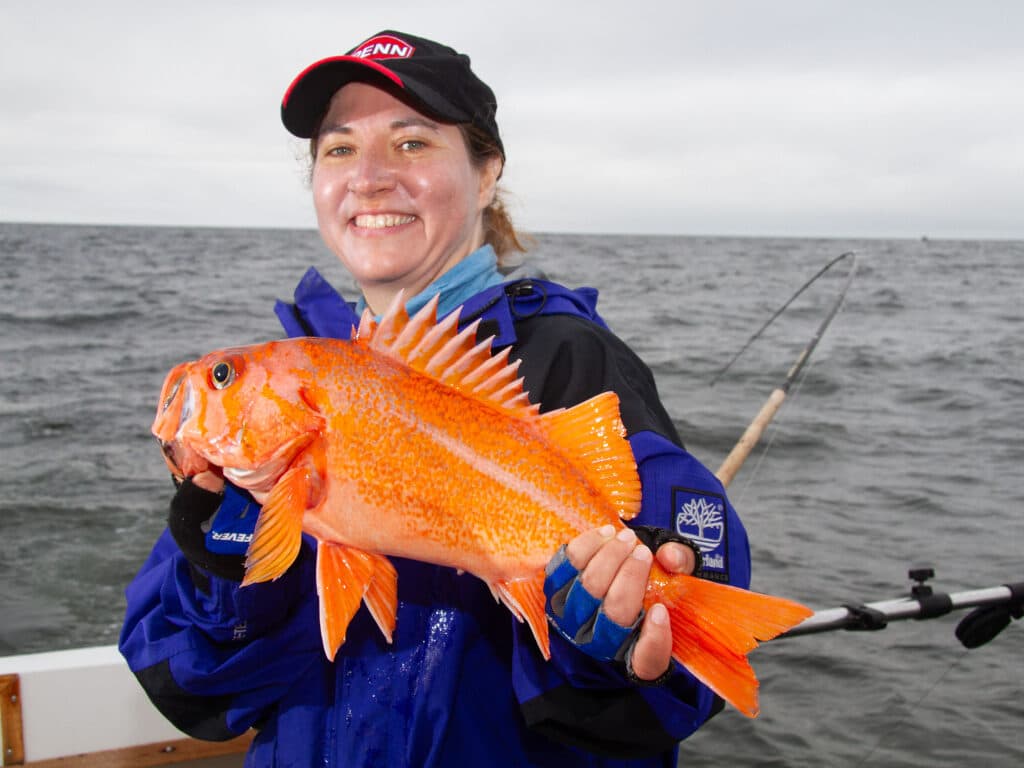
Then there are the rockfish. Dozens of species of the genus Sebastes are found in the north Pacific, many in these waters. The aggressive nature and many varieties and colors of rockfish make for a light-tackle angler’s bonanza.
Unfortunately, many visiting anglers don’t come equipped with gear light enough to maximize the sport this action should offer. Twelve-pound braided line is plenty and will allow relatively light jigs (slow-pitch or leadhead with plastics) to sink 50 to 250 feet. And these rockfish are, like most of the fish caught here, delicious.
Planning a Trip
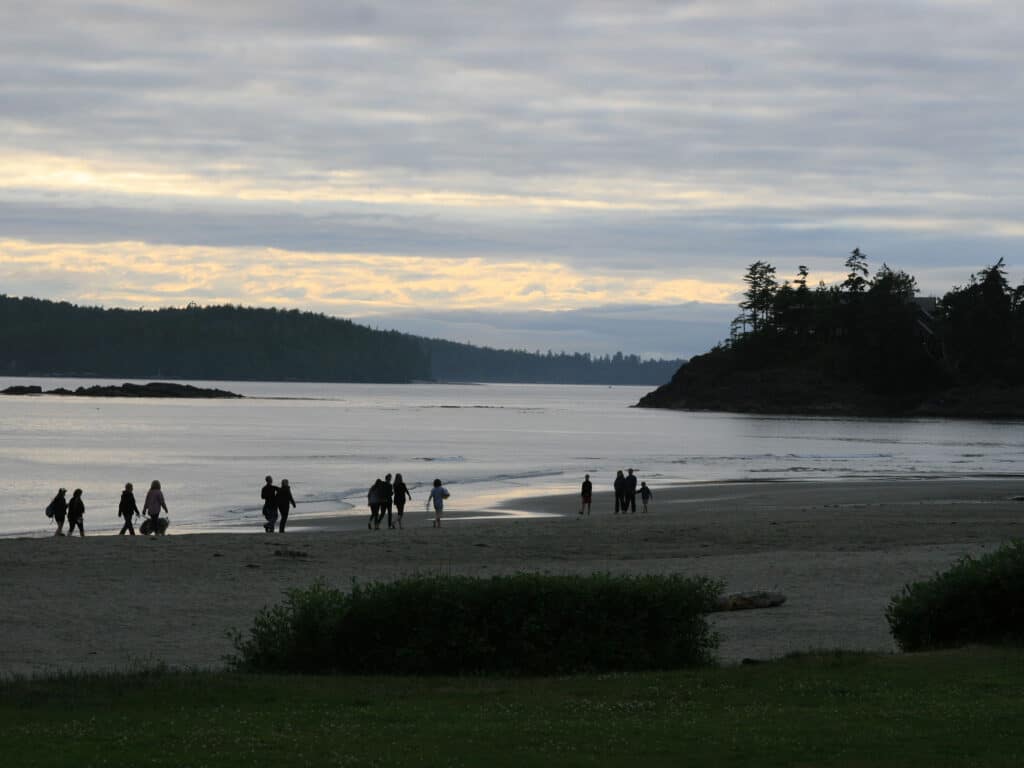
Where To Go and How To Get There: Visitors with large, seaworthy boats can, of course, sail right to ports in either sound. The great majority of visiting anglers arrive by car. Wherever you are driving from, you will need to get to Vancouver Island, which most likely requires a ride on a huge ferry. It’s a considerably longer drive up from Victoria, so your best bet is the ferry that runs from Tsawwasen to Nanaimo. In the summer, reservations are a must: Make them online at bcferries.com.
A bit of searching online will reveal various resorts, many with moorage, as well as a variety of homes available to rent. Rates drop precipitously in late fall through early spring, but so do the odds of good ocean conditions. That said, there are plenty of fish to be caught in colder months, and for those with time to stick around for a while, the chances of some good days are pretty fair.
What To Expect: Ucluelet (“people of the safe harbor” in the indigenous Nuu-chah-nulth language) is the main jumping-off point for Barkley Sound waters. Tofino is at the northern end of a peninsula that juts into Clayoquot Sound. It offers a similar infrastructure for visiting anglers as Ucluelet. Find general information at discoverucluelet.com and tourismtofino.com.
Between Tofino and Ucluelet is the Long Beach Unit of the vast Pacific Rim National Park Reserve—10 miles of pristine sandy beaches (longest such stretch on the west coast of Vancouver Island) where cold-water surfers ply their sport.

